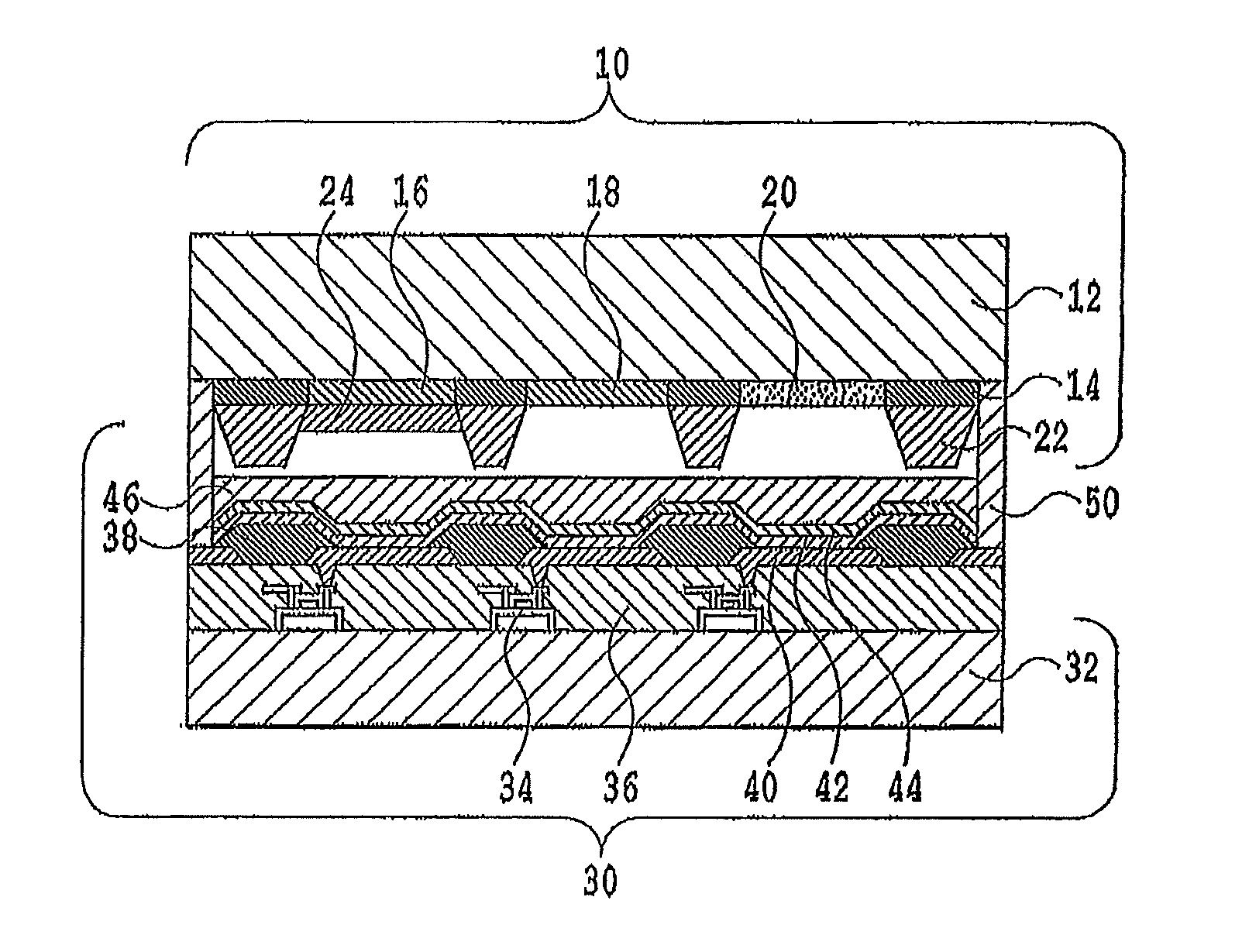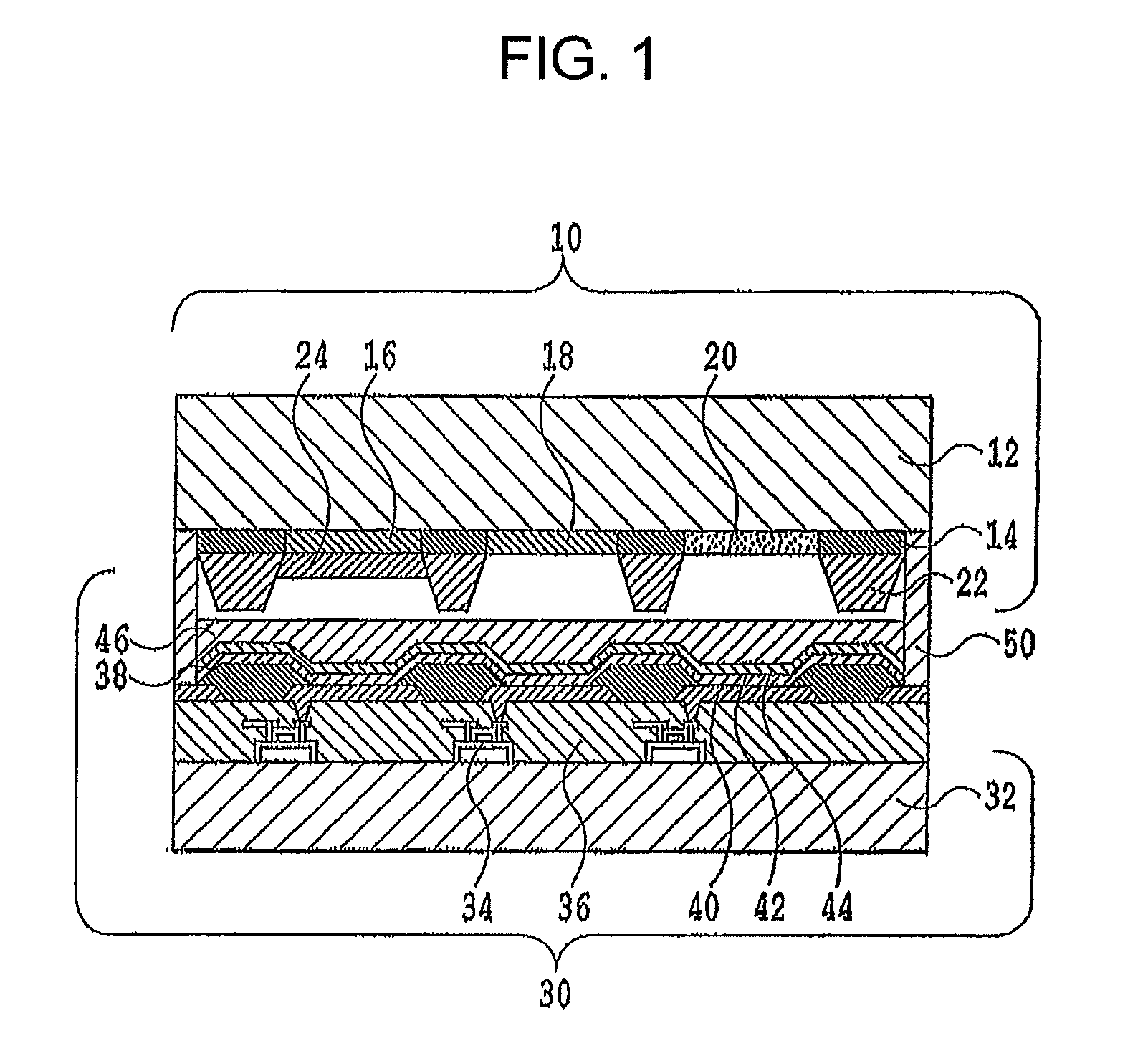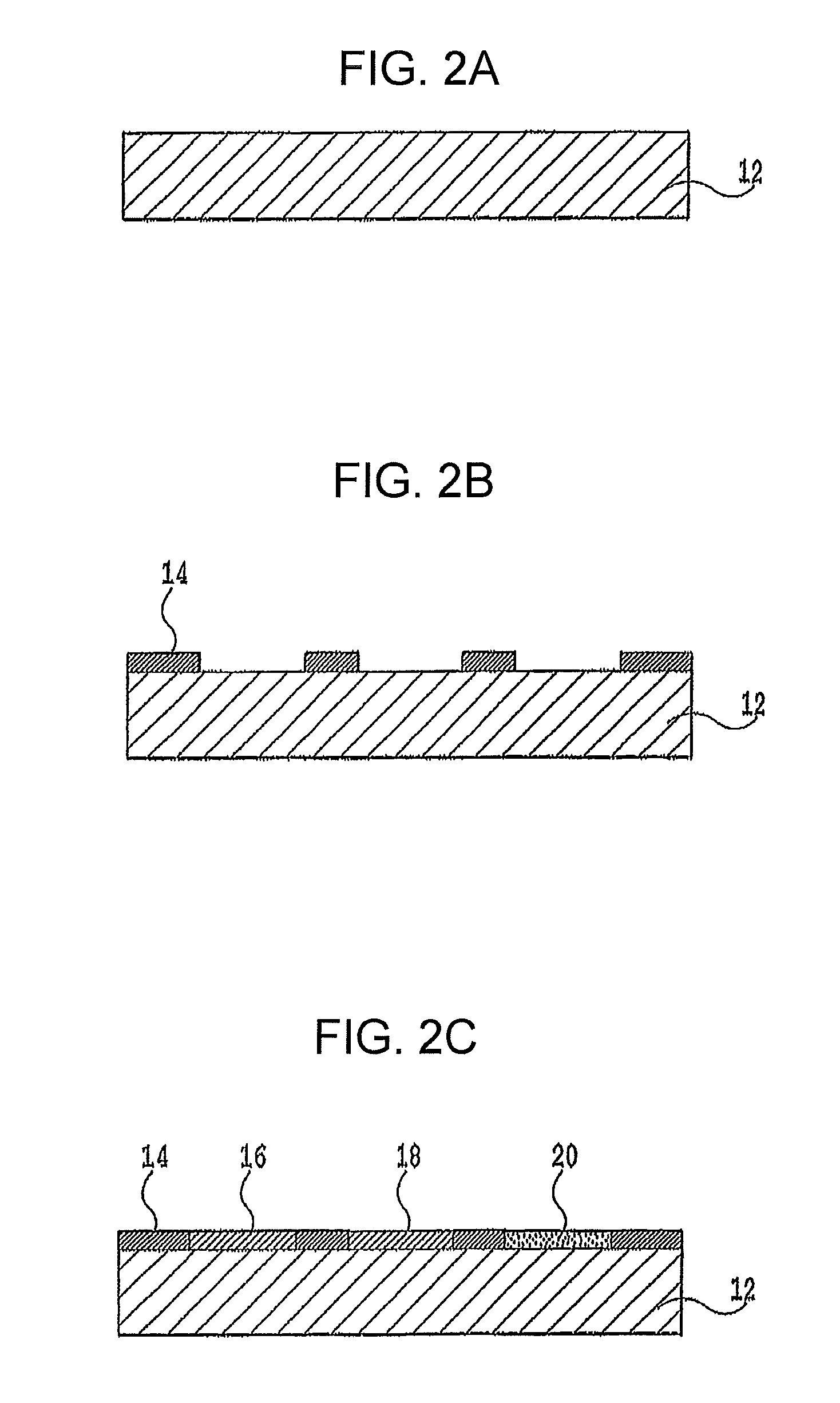Color conversion film and multicolor-emitting, organic electroluminescent device comprising the color conversion film
- Summary
- Abstract
- Description
- Claims
- Application Information
AI Technical Summary
Benefits of technology
Problems solved by technology
Method used
Image
Examples
example 1
of Present Invention
Preparation of Color Modulation Part
[0117]Corning glass 500 mm×500 mm×0.50 mm in size was prepared as the transparent substrate. A resist resin containing a black dye was applied by spin coating atop this glass substrate, and patterned by photolithography. In this way, a 2 μm-thick black matrix was obtained with openings for forming the color filters. The pattern was formed with a width of 0.100 mm between subpixels and width of 0.116 between pixels.
[0118]A blue filter material (Fuji Film Color Mosaic CB-7001) was applied by spin coating, and patterned by photolithography to obtain a 2 μm-thick blue filter with a pitch of 0.780 mm.
[0119]Next, a green filter material (Fuji Film Color Mosaic CG-7001) was applied by spin coating, and patterned by photolithography to obtain a 2 μm-thick green filter with a pitch of 0.780 mm.
[0120]Finally, a red filter material (Fuji Film Color Mosaic CR-7001) was applied by spin coating, and patterned by photolithography to obtain a ...
example 2
of Present Invention
[0136]Dimethylphenyl-terminated poly[(9,9-dioctyl-2,7-divinylene-fluorenyl)-Alt-Co-{2-methoxy-5-(2-ethyl-hexyloxy)-1,4-phenylene}] (average molecular weight 50,000) was used as the first dye and 4-dicyanomethylene-2-methyl-6-(p-dimethylaminostyryl)-4H-pyran (DCM-1) as the second dye to prepare the red color conversion layer of Example 1 of the present invention. The concentration of the second dye in the mixture of the first and second dyes was 0.2 wt %. 10 parts by weight of such a mixture was dissolved in 1000 parts by weight of toluene to prepare ink.
[0137]A multicolor emitting organic electroluminescent device was obtained as in Example 1 of the present invention except for the matters describe above.
example 3
of Present Invention
[0138]The following compound (Compound A) prepared by Williamson ether synthesis of halogenated coumarin 6 and pentaerythritol was used as the oligomer of the first dye in preparing the red color conversion layer of Example 1 of the present invention.
[0139]Using DCM-1 as the second dye, the concentration of the second dye in the mixture of the first and second dyes was 2 wt % in preparing the red color conversion layer of Example 1 of the present invention. 51 parts by weight of this mixture was dissolved in 1000 parts of toluene to prepare ink.
[0140]A multicolor emitting organic electroluminescent device was obtained as in Example 1 of the present invention except for the matters describe above.
PUM
 Login to View More
Login to View More Abstract
Description
Claims
Application Information
 Login to View More
Login to View More - Generate Ideas
- Intellectual Property
- Life Sciences
- Materials
- Tech Scout
- Unparalleled Data Quality
- Higher Quality Content
- 60% Fewer Hallucinations
Browse by: Latest US Patents, China's latest patents, Technical Efficacy Thesaurus, Application Domain, Technology Topic, Popular Technical Reports.
© 2025 PatSnap. All rights reserved.Legal|Privacy policy|Modern Slavery Act Transparency Statement|Sitemap|About US| Contact US: help@patsnap.com



